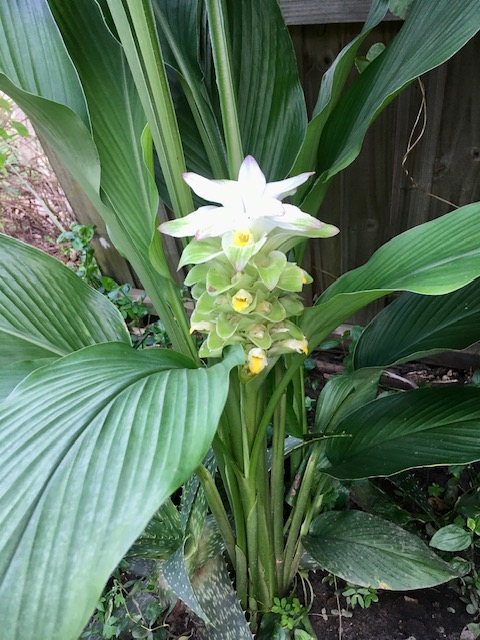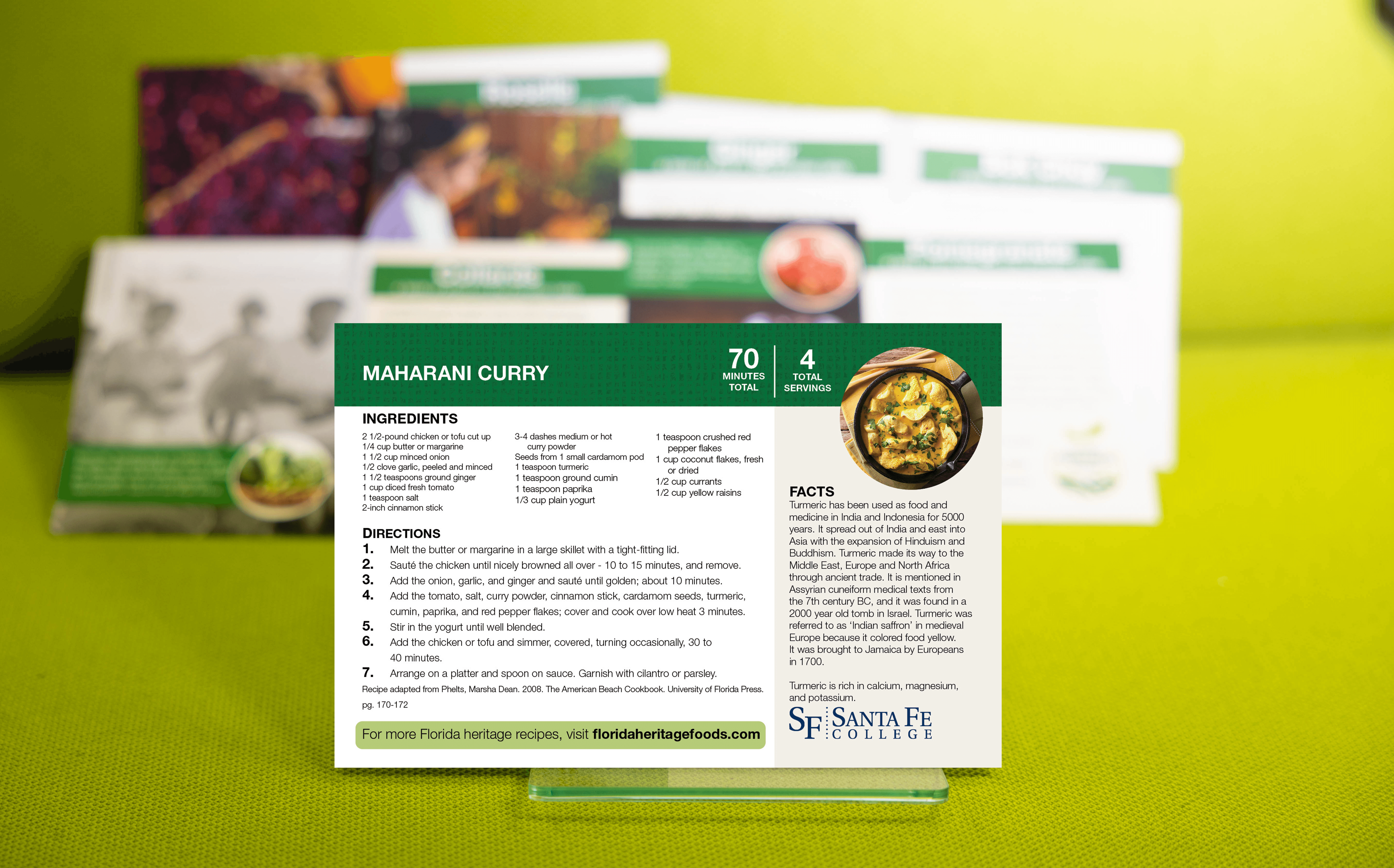Turmeric
Curcuma longa

हल्दी (Haldee, Hindi), Safran des Indes (French), હળદર (Haḷadara,Gujrati), Manjano (Swahili), Huruud (Somali), كُركُم (kurkum, Arabic), 姜 (jiānghuáng, Mandarin)
Turmeric is a type of ginger native to India and Southeast Asia. The root has been used for food, ritual and medicine for nearly 5000 years. It spread to Europe through ancient trade routes, and Europeans brought it to the Americas during the colonial period. Yet, turmeric did not gain significant popularity in the U.S. the 20th century when increased immigration from Asia called attention to its nutritional and medicinal qualities. Today turmeric is not only grown commercially throughout the United States, gardeners in Florida are adding turmeric to shady areas in home gardens and as a flowering ornamental in edible landscapes.

Evidence suggests that turmeric has been in cultivation in southern India and Indonesia for 5000 years, and it spread out of India and east into Asia with the expansion of Hinduism and Buddhism. Turmeric made its way to the Middle East, Europe and North Africa through ancient trade. It is mentioned in Assyrian cuneiform medical texts in the library at Nineveh in the 7th century BC, and it was recently found in a 2000 year old tomb in Israel. During the medieval period in Europe, turmeric was referred to as ‘Indian saffron’ because the root colored food yellow, and the root was also used to dye textiles. Turmeric was brought to Jamaica during European colonialism in 1700, primarily as a spice and colorant. It is mentioned in a curry recipe featured in the 1831 edition of Mrs. Mary Randolph’s Virginia Housewife. However, it was not until the 20th century when significant waves of immigrants from Asia entered the U.S. did turmeric receive attention for its nutritional and medicinal qualities. Today turmeric is not only grown for food in the United States, it is being used as a shade-loving ornamental plant. Gardeners throughout Florida are adding turmeric to shady areas of home gardens and in edible landscapes.
Turmeric has a peppery taste, and it is a popular spice in Indian, Middle Eastern, Moroccan, East African, and Caribbean cuisines. It is significant in Chinese medicine, Indian Ayurvedic practices, and Arabic Islamic Unani medicine, and the root has been used to dye the robes of monks and priests a distinctive yellow throughout southeast Asia for centuries. Turmeric plays a significant role in a wide variety of cultural and religious rituals throughout India such as the pre-wedding haldi ceremony and Bhandara festival. The root is consumed fresh, dried, or boiled. It is most commonly dried, ground into a powder and used to flavor or color food a deep orange-yellow. It is particularly common in Indian curry spice mixes as well as the Moroccan spice mix called ‘ras al hanut.’ Lebanese cuisine includes sfouf, a turmeric cake. In the Caribbean it is used in stews and rice dishes. It has been a common natural food coloring agent in the U.S. in preserved pickles, condiments, and other processed foods labeled as “natural yellow 3.” In more recent decades, American and European consumers have paid greater attention to the nutritional and medicinal qualities of turmeric, and ground turmeric root known as ‘cucurmin’ is taken in capsule form as well as in a sweetened beverage referred to as “golden milk.”

Turmeric is rich in calcium, magnesium, and potassium.


Plant rhizomes in spring or early summer and harvest in fall once leaves turn brown or die off completely. Like ginger, turmeric will grow again in the spring even though the leaves have died.
To plan a heritage garden, download the ‘Planning a Florida Heritage Garden (PDF).’

Santa Fe College Partnered with Multiple Organizations in a Collaborative Effort to Bring Awareness of the Heritage Plants In Florida.
BY CULTURAL HISTORY
BY GROWING SEASON
DROUGHT TOLERANT PLANTS
Commitment to Equal Access and Equal Opportunity
Santa Fe College is committed to an environment that embraces diversity, respects the rights of all individuals, is open and accessible, and is free of harassment and discrimination. For more information, visit sfcollege.edu/eaeo or contact equity.officer@sfcollege.edu.
SACSCOC Accreditation Statement
Santa Fe College is accredited by the Southern Association of Colleges and Schools Commission on Colleges (SACSCOC). For more information, visit sfcollege.edu/sacscoc.
